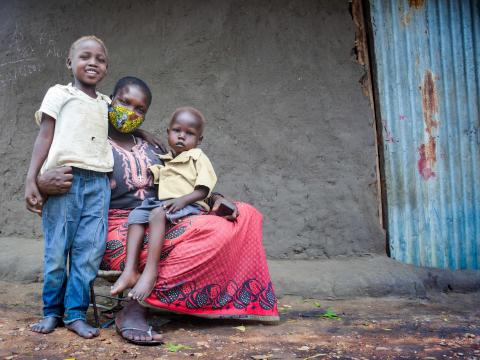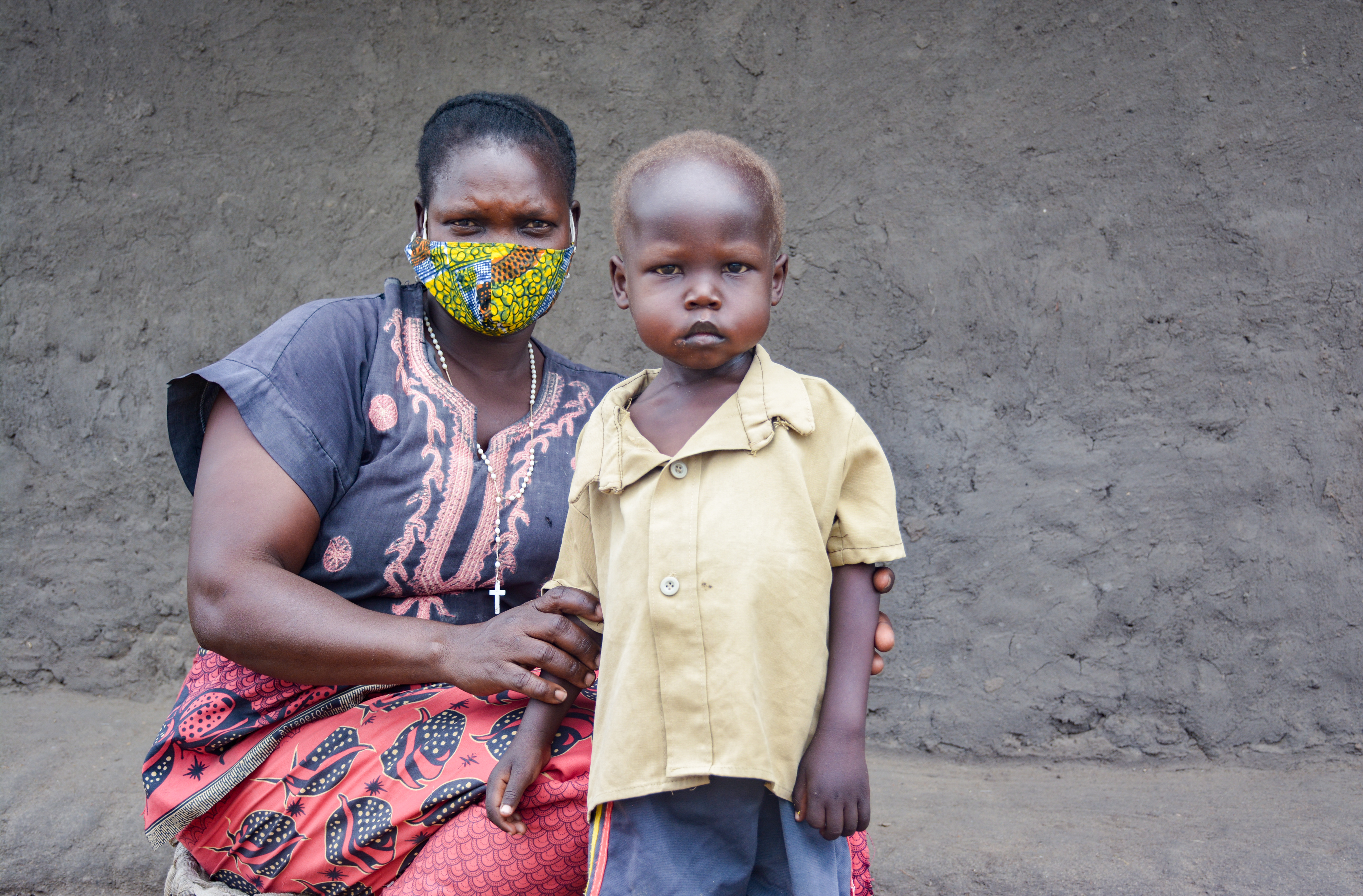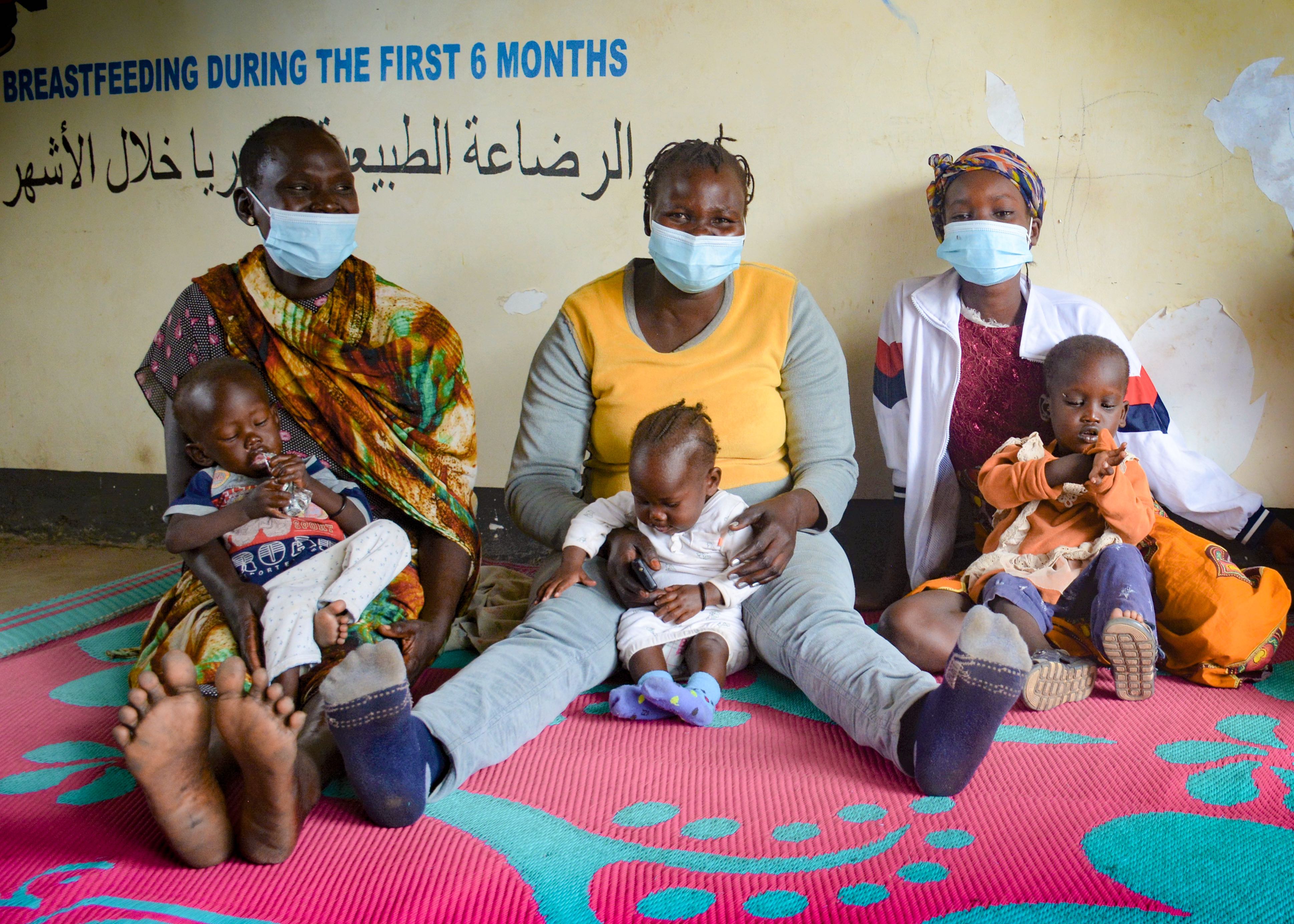Mothers despair as hunger and malnutrition rise among South Sudan’s children

“I cannot afford to feed the children anymore”, says Viola Woro, a 37-year-old mother of six and a guardian to two children. When her younger sister Christine’s husband died in 2019, during the conflict, Viola said her sister Christine did not only lose her husband but also left her traumatized and unable to take care of her children.
Lejong, Christine’s 5-year old daughter says, “I often slept hungry if neighbors did not give us food.” “When Lejong and Peter were brought to me by a neighbor, they did not look healthy. They have been with me for close to two years now”, Viola recalls.

Viola adds, “Peter was very young, and since he was not breastfed, he was in poor health. Sometime last year, he refused to eat food and started vomiting. I was so scared he would die from malnutrition. I cannot buy him milk and other nutritious foods because I do not have the money”, Viola explains.
Viola’s husband can hardly support the family, hence, she started brewing alcohol for income to feed the family. The business did not last when the pandemic was declared. Unable to pay the rent, she moved her family with her 60-year old mother Mary Keji.

“A few weeks ago, Peter started having diarrhea, his skin color changed, his body was swollen and he lost the appetite. I brought him to World Vision’s nutrition site in Gumbo and was diagnosed with Kwashiorkor, a severe acute form of malnutrition. He was admitted into Outpatient Therapeutic feeding Program and was given a dosage of plumpy nuts and medicines as he had cough”, she says.
Nutrition Assistant Hakim Jacob facilitated his check-up at the AL-Sabah Children’s Hospital in Juba where he was diagnosed with an infection in the blood and kidney. After the doctor prescribed medicines, Viola and Peter went back to the World Vision nutrition site. This time, Peter was found with a respiratory tract infection and nutritional edema.
In Central Equatoria State, where capital city Juba is located, the GAM rates remained critical at 15.3 percent above the 15 percent emergency threshold. This means at least 15 in every 100 children suffer acute malnutrition.
“As a mother, I urge everyone to support Peter. Seeing him healthy again will take some of my stress and sorrows away. His health and wellbeing are more important to me than food”, Viola appeals as the World Vision team assists on his treatment.
Juba Nutrition Coordinator Komakech Mandela says, “Hunger, conflict, and the COVID-19 pandemic have disrupted people's livelihoods and ability to earn an income of many families. “In Central Equatoria State, where capital city Juba is located, the GAM rates remained critical at 15.3 percent above the 15 percent emergency threshold. This means at least 15 in every 100 children suffer acute malnutrition.”

“The levels of acute food insecurity situation driven by flooding, insecurity, population displacement, locusts infestation of crops, diseases, and effects of Covid-19, declined crop production, sub-optimal maternal, infant and young child nutrition, and care practices, have seen many children like Peter suffer from acute malnutrition”, says Rahab Kimani, World Vision’s Roving Technical Nutrition Manager.
Based on the latest Integrated Food Security Phase classification report for December 2021, an estimated over 1.3 million children under five years are acutely malnourished and in need of treatment. “Poor infant feeding practices coupled with all the challenges named above will leave more children in an even worse situation”, adds Kimani.

In 2020, World Vision’s Juba Urban Nutrition Project, supported by the World Food Programme (WFP), UNICEF, and World Vision Honk Kong, reached a total of 108,439 children aged 6-59 months with screening for acute malnutrition and 2,004 were identified with severe acute malnutrition and 4,957 with moderate acute malnutrition.
A total of 100,359 caregivers of children aged 6-59 months were reached with the group and individual counseling sessions through the Maternal Infant and Young Children Nutrition Program in World Vision’s 15 nutrition sites in Juba.

Story and photos by Jemima Tumalu, Communications Officer with inputs from Komakech Mandela, Juba Nutrition Coordinator